Cocoa Powder Nutrition Facts: A Treat for Your Health Goals
If you’re a fan of sweet treats and want to keep your healthy habits on track, you’ll love learning about cocoa powder nutrition facts. While cocoa powder often hides behind sugary chocolate bars, it can stand on its own as a nutritional superstar. By understanding its origin, benefits, and everyday uses, you’ll find plenty of reasons to sprinkle a scoop into your smoothies, oatmeal, or even your savory recipes.
More than just a dessert ingredient, cocoa powder contains impressive levels of antioxidants, along with key minerals like magnesium and potassium. In addition, it’s a low-calorie option that can add a burst of chocolate flavor without piling on sugar or unhealthy fats. Ready to discover how cocoa powder can help you hit your health goals? Let’s break it all down step by step.
Understand cocoa’s origin.
Cocoa powder comes from fermented and dried beans harvested from the cacao tree (Theobroma cacao). Once the beans are roasted, they’re ground, and most of the cocoa butter (the fat) is removed, leaving behind the powdered form. For centuries, various cultures have used cacao beans to create rich, chocolatey beverages and medicinal tonics. These ancient civilizations believed cocoa bean concoctions had special health properties, and modern research backs this up with science-based evidence.
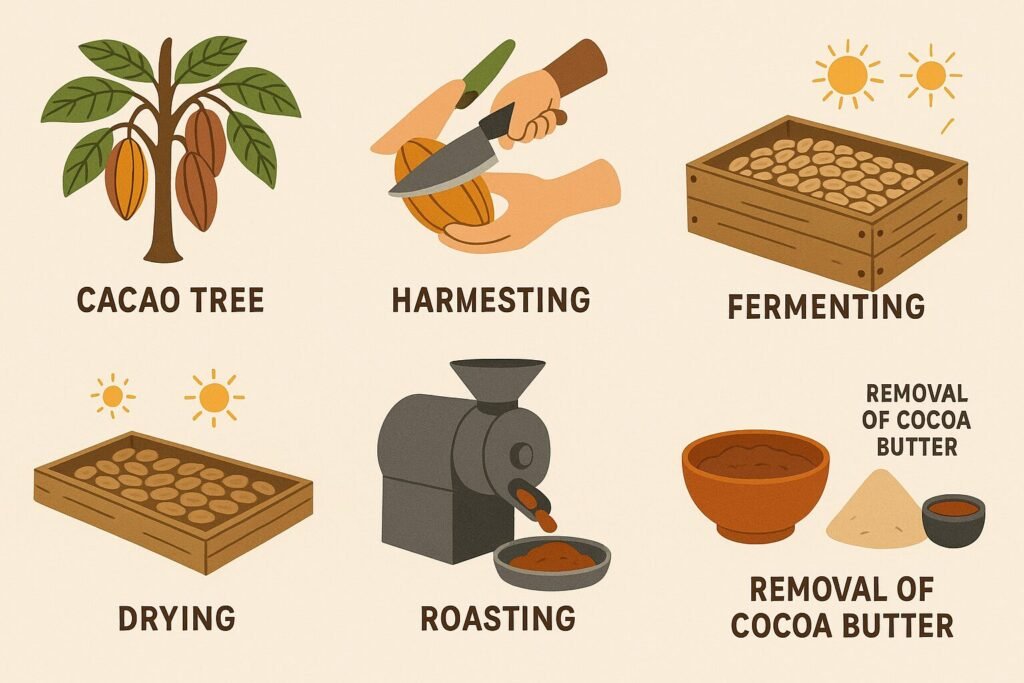
From cacao tree to cocoa powder processing
That said, cocoa became more widespread when explorers from Europe encountered cacao beans in the Americas. Over time, the beans evolved into the sweet, popular chocolate products you see everywhere today. Still, cocoa powder remains one of the closest forms to its natural state, retaining more flavonoids (antioxidants) and fewer additives than sugary chocolate candy bars. The next time you indulge in a hot cocoa, you’ll know you’re sipping on something steeped in history.
Explore cocoa powder nutrition facts.
Let’s take a closer look at the nutritional numbers that make cocoa powder a treat you can feel good about. Keep in mind, values can vary slightly across brands, mainly if they’re processed differently or include added sugar. Always check the product label for the most accurate details.
Here’s a quick summary of what you get in around one tablespoon (about 5 grams) of unsweetened cocoa powder:
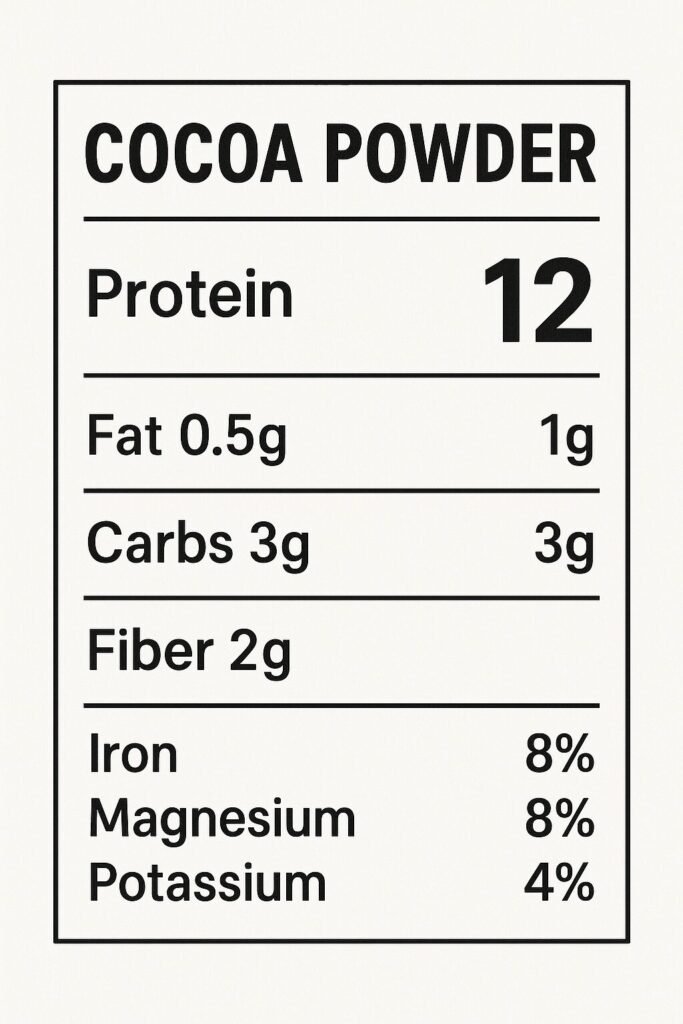
Detailed cocoa powder nutritional breakdown
- Cocoa powder is low in sugar, making it a great choice if you’re reducing your sugar intake.
- The fiber in cocoa can help keep you feeling full and support regular digestion.
- Minerals like magnesium and iron support energy levels, muscle function, and oxygen transport in your body.
With just a small spoonful of cocoa powder, you can enhance your meals or snacks without a hefty calorie spike. That’s a big plus for those watching their weight or simply trying to eat more nutrient-dense foods.
Uncover top health benefits.
Because cocoa powder is relatively rich in antioxidants and other essential nutrients, it’s linked to a variety of health perks. While it’s not a magic bullet for every ailment, the health benefits of cocoa powder can certainly be part of a balanced diet, giving you the reassurance and confidence in your food choices. Let’s dive a bit deeper into how cocoa may support your well-being.
Supports your heart
These flavonoids, especially a type called flavanols, are potent antioxidants that can help maintain healthy blood vessels, potentially supporting normal blood pressure over time. Antioxidants are compounds that help neutralize harmful free radicals in the body, reducing oxidative stress and the risk of chronic diseases. So, if you’re looking to show your heart a little love, sprinkling some cocoa powder into your diet might be a flavorful way to do it.
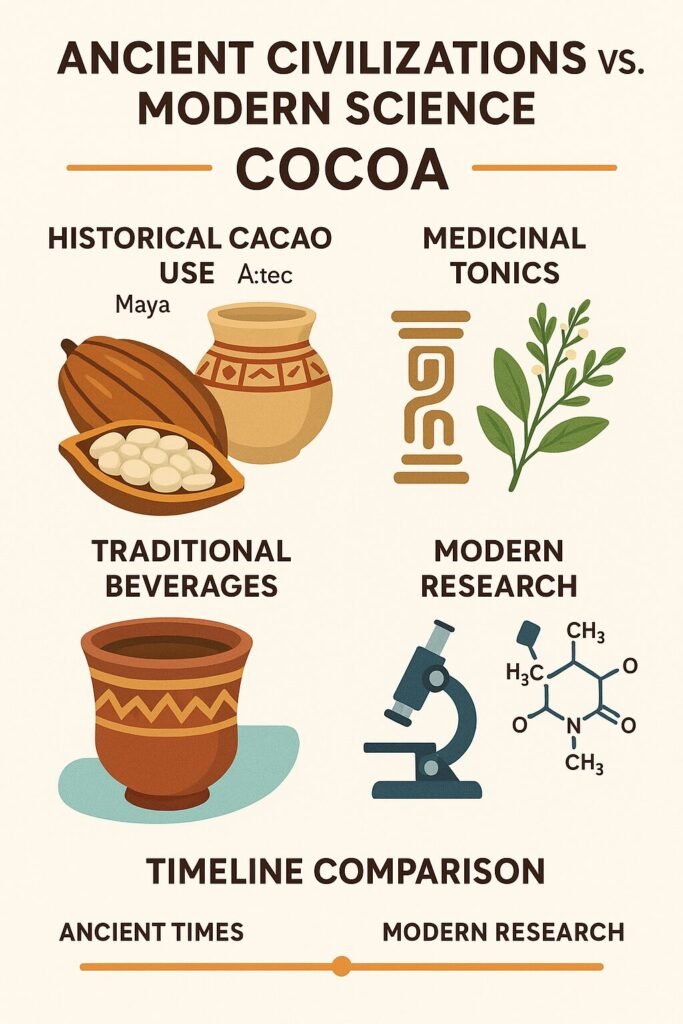
Historical and modern perspectives on cocoa health benefits
Boosts your mood
Ever notice how a single bite of something chocolatey can put a smile on your face? There’s a reason behind that. Cocoa contains mood-enhancing compounds like theobromine and phenylethylamine, which can influence the release of certain “feel-good” chemicals in the brain. While you shouldn’t rely on cocoa alone to chase away the blues, it’s a fun and tasty addition when you need a little lift.
Helps with weight goals
If you’re aiming to lose or maintain weight, cocoa powder can be a clever helper. Because it’s intense in flavor, you only need a small amount to get a satisfying chocolate taste. That way, you can reduce the need for overly sugary treats that can derail your goals. Combine cocoa with yogurt or oatmeal for a sweet, filling snack that doesn’t carry loads of extra calories. Plus, the high fiber content in pure cocoa can help keep you satiated.
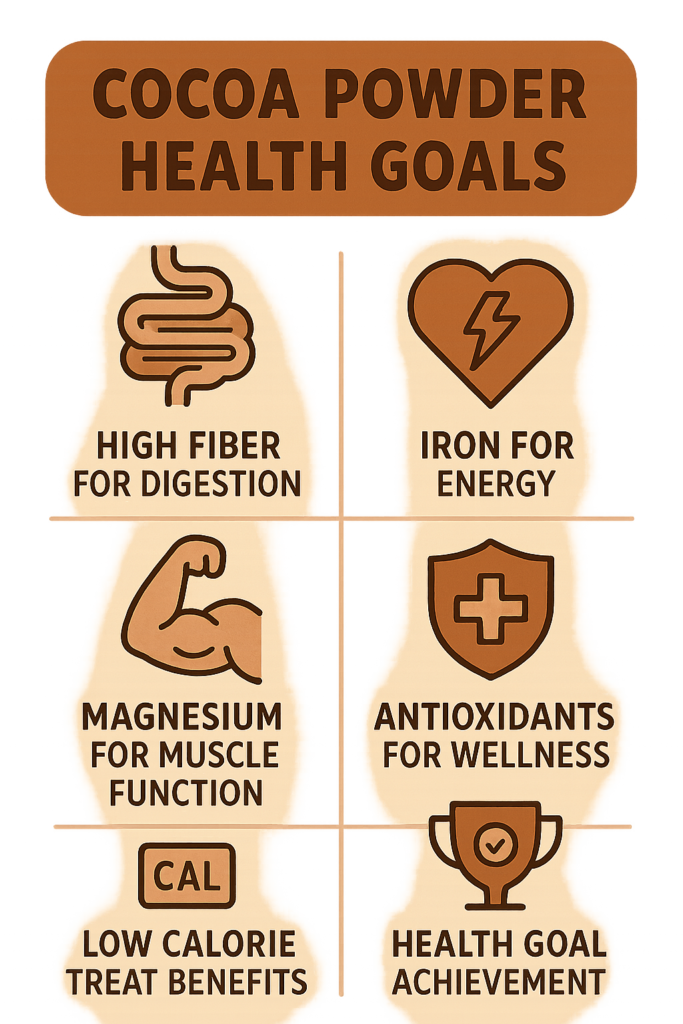
How cocoa powder nutrition supports health goals
Improves skin and hair
Did you know the antioxidants in cocoa also provide a beauty boost? Antioxidants fight off free radicals — those pesky molecules that accelerate aging and cellular damage. While more research is needed, some beauty enthusiasts swear by cocoa-based facemasks or hair treatments for extra luster. Even simply eating cocoa in moderation could support healthy, glowing skin from the inside out.
Provides an energizing effect
Cocoa powder contains a small amount of caffeine, which can give you a slight pick-me-up. It’s not as high in caffeine as coffee, but sometimes a subtle burst is just what you need. Theobromine, another compound in cocoa, can also gently stimulate your central nervous system without making you feel jittery. For a cozy energy boost, consider whipping up a cup of hot cocoa in the morning or mid-afternoon instead of reaching for that second cup of coffee.
Discover ways to use cocoa powder.
When you think of cocoa, you might picture decadent brownies or hot chocolate piled high with whipped cream. While those desserts can be downright delicious, there are plenty of ways to use unsweetened cocoa that don’t involve a sugar overload. If you’ve got cocoa powder in your pantry, here are a few ideas to add variety (and nutrients) to your daily routine. The versatility of cocoa powder allows you to experiment with a wide range of recipes, inspiring creativity in your kitchen.
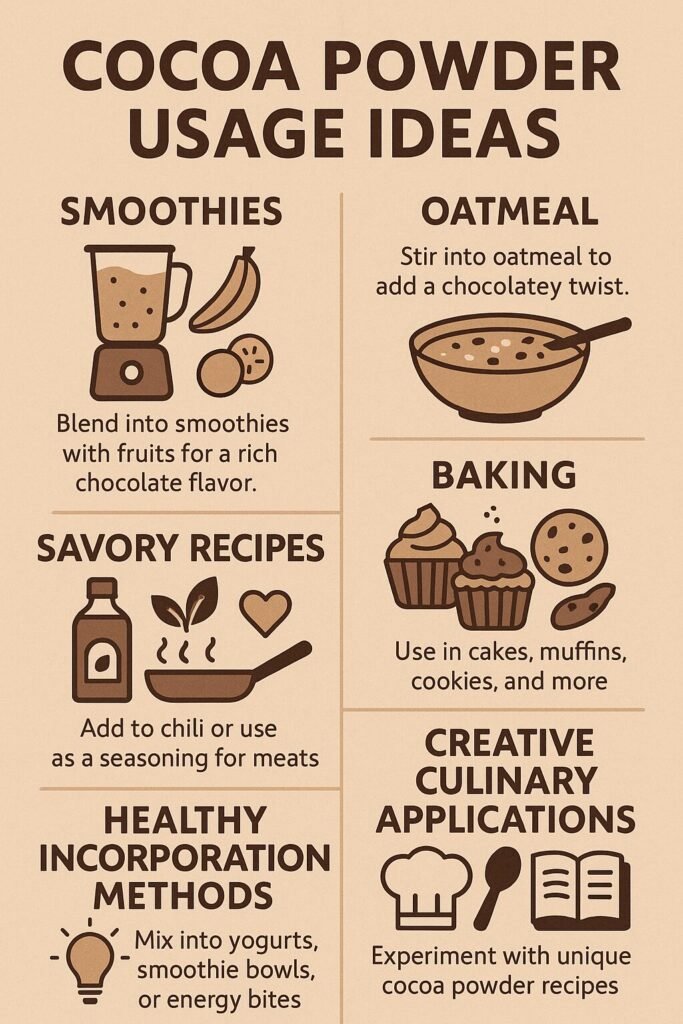
Creative ways to use cocoa powder for health goals
- Smoothie magic
- Blend a spoonful of cocoa with banana, spinach, and almond milk. You’ll get a creamy, chocolatey vibe with the bonus of added greens.
- Oatmeal upgrade
- Stir cocoa into your morning oats for a comforting bowl of chocolate oatmeal. Top with strawberries, nuts, or a drizzle of honey for sweetness.
- Homemade chocolate yogurt
- Mix plain Greek yogurt with a small amount of cocoa and a dash of sweetener. You’ll create a guilt-free chocolate mousse in minutes.
- Savory twist
- Believe it or not, cocoa can enhance savory dishes, too. Add a bit to chili or mole sauce for a richer, more complex flavor.
- Healthy hot cocoa
- Whisk a spoonful of cocoa powder into hot milk or a dairy-free alternative. Sweeten gently with stevia, honey, or maple syrup, and you’ve got a comforting beverage.
- Dark-chocolate hummus
- Blend chickpeas, cocoa, a sweetener, and a tiny dash of vanilla extract. Serve with apple slices or crunchy breadsticks for a unique protein-packed snack.
A little creativity can turn cocoa powder into your secret weapon in the kitchen. Keep in mind, pairing it with nutrient-rich foods (like fruits, whole grains, or legumes) is a savvy way to keep your meals balanced and satisfying.
Check important precautions
While cocoa can be a boon for your health, a few considerations might help you avoid pitfalls.
- Caffeine and sensitivity: Cocoa naturally contains caffeine, though it’s less than coffee. If you’re sensitive to stimulants or dealing with anxiety, keep an eye on how cocoa makes you feel.
- Added sugar: Some cocoa powders come pre-sweetened or are part of instant mixes. These foods can contain high amounts of sugar, which can quickly add up in your diet. Consider buying unsweetened varieties and adding your sweetener in small quantities.
- Allergies or intolerance: A cocoa allergy is rare, but it can happen. Symptoms might include rash, digestive issues, or difficulty breathing. If you suspect a problem, check with your doctor.
- Potential digestive discomfort: If you go too heavy on the cocoa powder, its high fiber content may cause mild digestive upset. Moderation is key.
For most people, enjoying cocoa occasionally and in moderate amounts is safe. When in doubt, read labels, check for sugar content, and see how your body responds.
Wrap up your cocoa journey.
Cocoa powder’s journey from the humble cacao bean to your pantry shelf is an exciting one, especially when you realize it’s more than just a dessert ingredient. By exploring cocoa powder nutrition facts, you uncover a source of antioxidants, fiber, and minerals that can fit snugly into many healthy lifestyles. Whether you’re aiming to lose weight, boost your mood, keep your skin glowing, or just curb that chocolate craving without overloading on junk, cocoa powder is there to help.
So go ahead and sprinkle a little cocoa in your next smoothie or oatmeal bowl. Experiment with savory recipes, bake a healthier brownie, or whip up a quick cup of hot cocoa. Each sip or bite can bring you closer to your dietary targets while satisfying your taste buds. Remember, moderation is your friend, and pairing cocoa powder with nutrient-rich foods will give you the ultimate benefit. Now you’ve got all the details you need to make cocoa powder a healthier part of your everyday life. Enjoy.